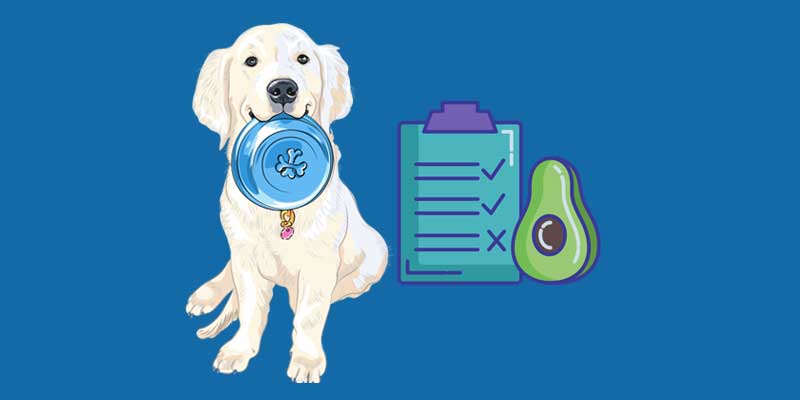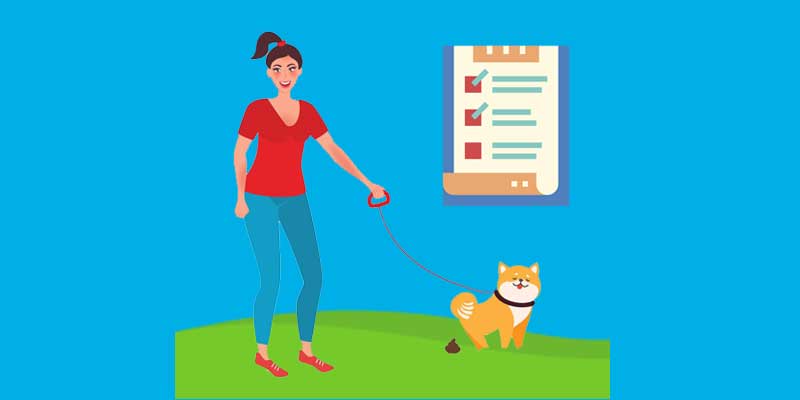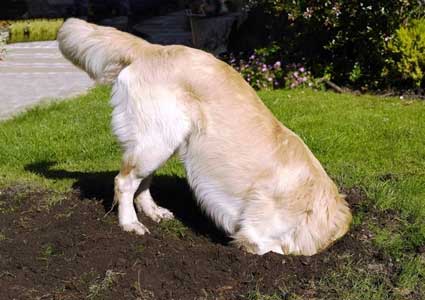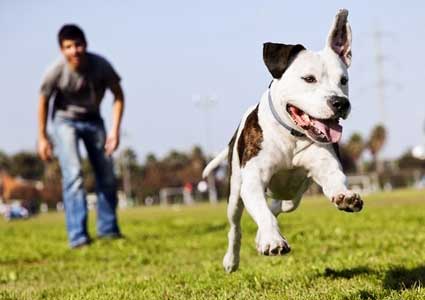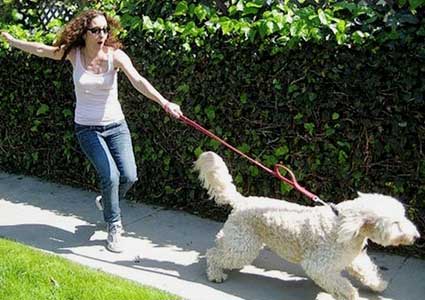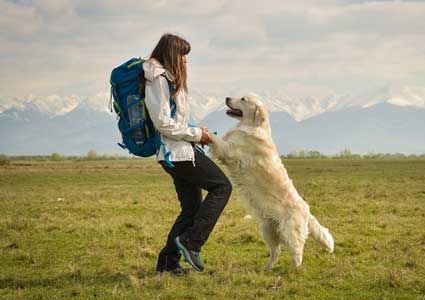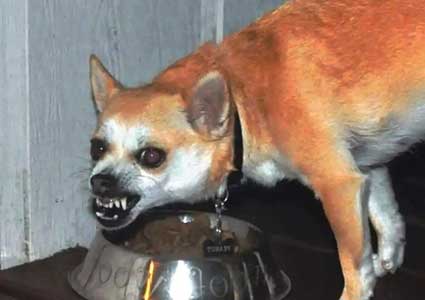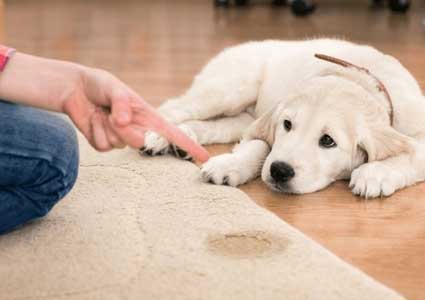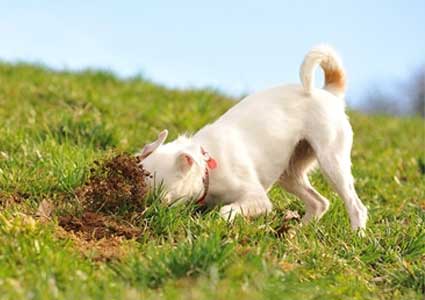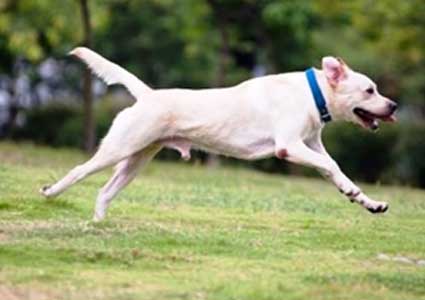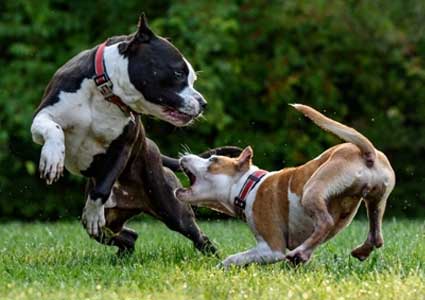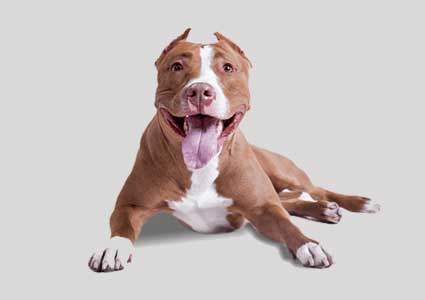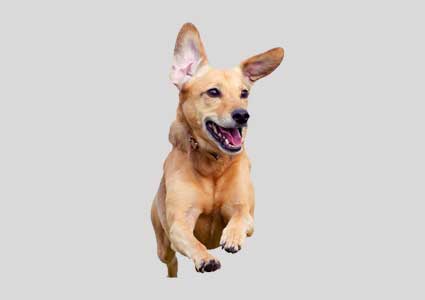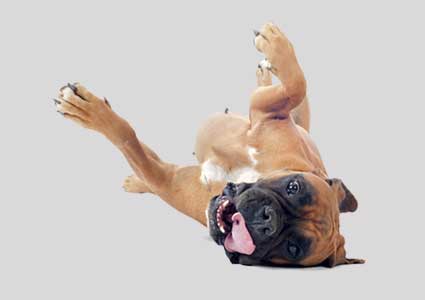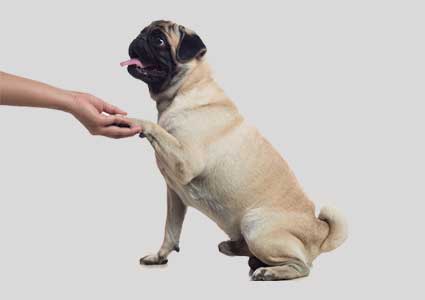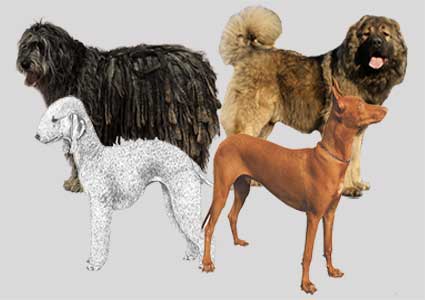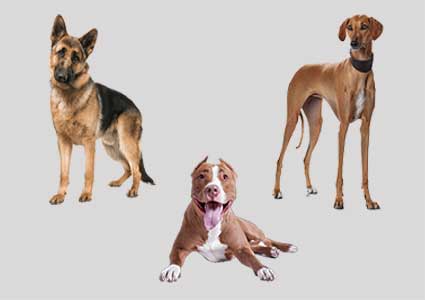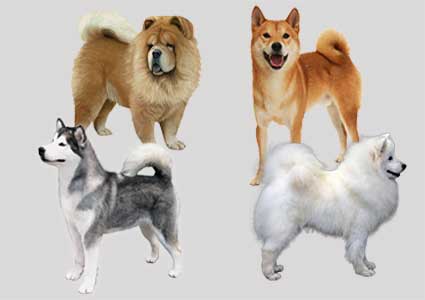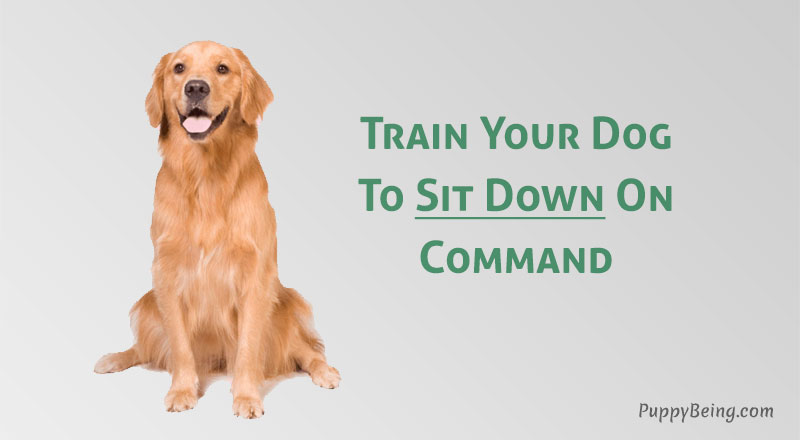
Sit is usually one of the first basic commands taught to any dog. You can teach your dog to sit on command in a few simple steps. Any dog older than 6 weeks can be trained to sit on cue.
It is one of the most important commands for any dog to learn because it gives you a surefire way to get your dog to stop moving any time you want. This command also lays the groundwork for teaching the “stay” command and other more complicated behaviors.
Trick Difficulty: Easy
How To Teach Your Dog To Sit on Command
There are mainly two ways to teach a puppy how to sit.
The first technique is known as luring. In this method, a lure is used to encourage the dog to sit on its hindquarters. This is the simplest and most commonly used method for training a dog to sit.
If luring doesn’t work well with your dog, then the second technique that can be used is capturing. In this method, the trainer simply stands in front of the dog and waits for him to sit naturally on his own. Once the dog sits, the behavior is “marked” using a treat, and the command “sit.”
Let us now take a detailed step-by-step look at both these methods.
Training Requirements
Training Room
It is best to do the training in a controlled environment that doesn’t have any distractions. Puppies usually have a small attention span, and there can be many sounds and sights outdoors that can take their attention away.
Practice the training steps in a room where you won’t be disturbed.
Treats
Get a handful of your dog’s favorite treats and carry them in a training treat pouch.
Clicker
A clicker can speed the training process for most dogs. If you don’t want to use a clicker, then you can simply use some marker word like “Yes!” instead.
Steps To Teach Your Dog To Sit Using Lure Method
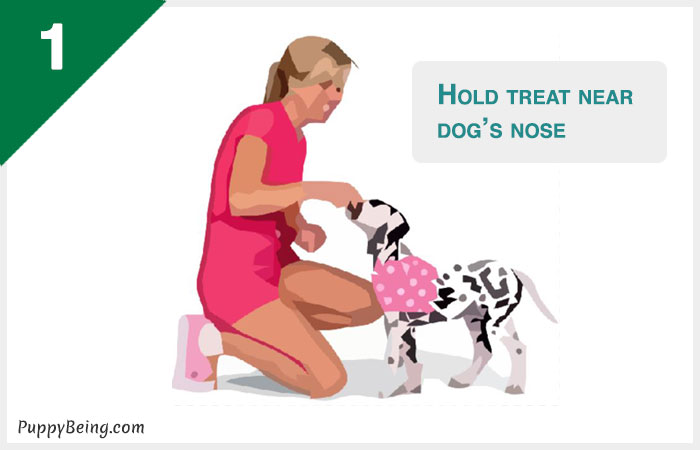
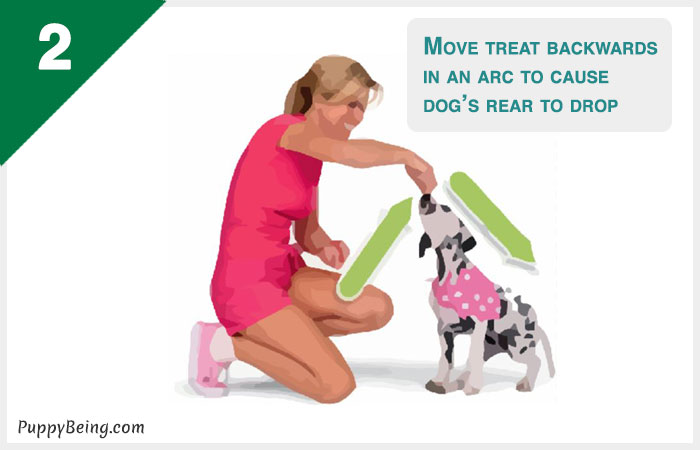
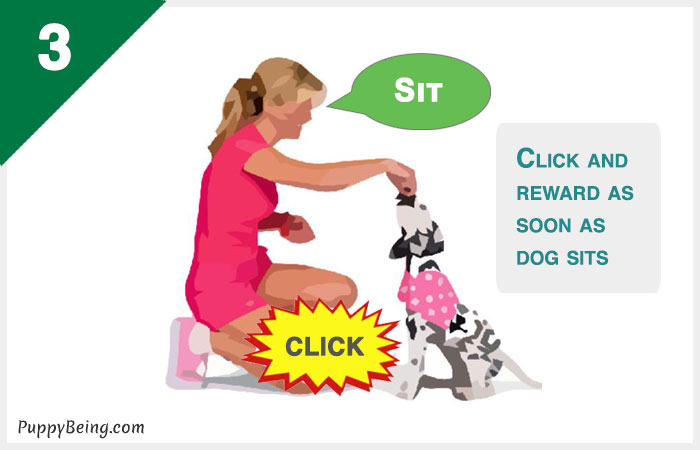
In this method, you will use a treat as a lure to move your dog naturally into a seated position.
- Hold a treat in your hand and stand or kneel in front of your dog (depending on your dog’s height). Keep your hand just slightly above your dog’s head so that he can see and smell the treat.
- Move the treat slowly up and over your dog’s head from his nose to his forehead and then towards his tail, so that your hand traces an arc in the air.
- Let your dog follow the treat with his nose until his head goes so far back that he has to lower his rear end down to the floor to reach the treat.
- The moment your dog’s rear touches the floor, release the treat, click the clicker, say “sit,” and praise him. Praising and gently rubbing your dog’s head reinforces the behavior, and teaches your dog that you liked what he just did.
- Only reward and praise if your dog is in the proper sitting posture. Don’t reward half sits because this will confuse your dog.
- Move your dog out of the sitting posture by using a command like “release” and take one step backward to motivate your dog to come towards you. This resets his position, and you can start over again.
- Repeat above steps until your dog starts sitting each time correctly. Always train for at least 10 minutes at a time.
- With enough practice, your dog should sit the moment you say “sit,” without having to move your hand. Then simply give him the treat and click.
- Gradually phase out the treats by asking your dog to “sit” while keeping your hands hidden. If he doesn’t sit, show him the treat and feed it after he sits. If he sits without showing the treat, then just click and praise him, don’t feed the treat.
- Once your dog has perfected “sit” in a distraction-free environment, take him outdoors or to a room with distractions and then repeat the training there. Eventually, your dog will learn to always sit on command no matter what is happening around him.
- Over time, your dog will learn to sit with just the command, and you can stop using the clicker and treats.
Lured Sit Training Problems and Solutions
If your dog doesn’t seem to be interested in the treat, then you need to pick a higher value treat that he enjoys eating.
If your dog doesn’t sit immediately, don’t say “no” or “sit” or any other words. This will only confuse the dog. Just stay quiet and let the dog focus on the task by repeating it again and again.
If your dog is jumping up to catch the treat, you are holding your hand too high up. Lower your hand until the treat is just a few inches from your pup’s nose.
If your dog goes backward instead of sitting, then you may be moving your hand back too fast, or you are moving it horizontally instead of in an arc. Move your hand in an arc from your dog’s nose towards his forehead and then towards his tail.
Overly energetic dogs may have a tough time learning to sit as they may keep moving around. In this case, you can practice close to a wall so that your pup has less space to move backward.
Remember to only give a treat if your pup is in the full sitting posture. Rewarding improper sits will confuse your dog and cause the training to take longer.
Some dogs may sit but immediately get back up. In this case, wait for a moment before you release the treat. This will train your pup to remain seated until released.
If your dog is not sitting correctly even after many repetitions, then don’t force him to sit. Instead, try the Capture Method.
Steps To Train Your Pup To Sit Using Capture Method
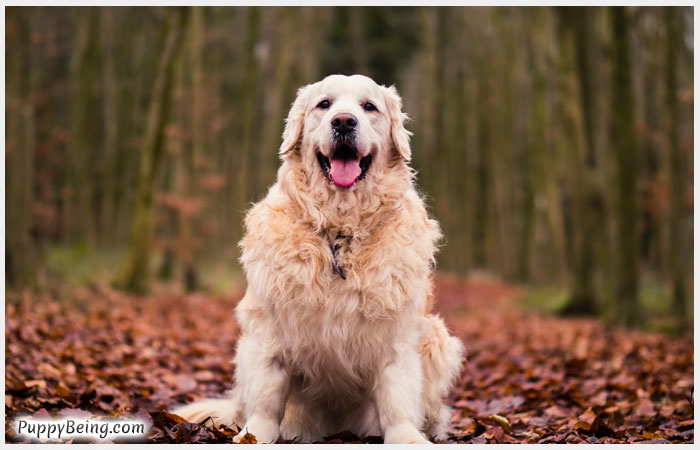
In this method, we wait for the dog to sit on its own without any assistance from us. Once the dog is in a seated position, we “capture” this sit with a click and command. It is similar to taking a photo of the behavior with the clicker.
- Pay attention to your dog and have your treats and clicker ready.
- When your dog sits down on his own, click and throw a treat.
- Throw the treat a bit away from your dog, so he has to get up to eat the treat. This resets his position and gives you another chance to capture a sit.
- Keep repeating above steps. Every time your dog sits, you must click and throw a treat.
- Eventually, your dog will make the connection and offer to sit for you on his own. Now you can add the verbal command “sit” along with the click and then throw the treat.
- Practice in different rooms and outdoors until your dog always sits on command, even with distractions around. Keep rewarding each sit with a click and a treat.
- Slowly phase out the treat and clicker and keep practicing till your dog sits with just the command alone.
Captured Sit Training Problems and Solutions
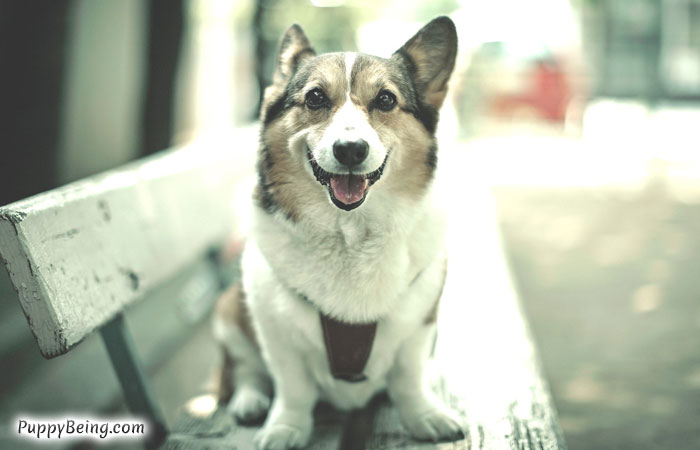
If your dog rarely sits on his own, it might be due to some medical condition that may be causing pain. Once your vet has eliminated the possibility of any issues, you can try using the Lure method instead.
If your dog jumps out of the sitting posture as soon as you click, then you can wait for a few seconds before you click and then throw the treat.
Young puppies sometimes can only sit in a slightly crooked posture known as “puppy sit.” If this is how your pup always sits, then it is fine to train with this posture. As your dog gets older, he will naturally learn to sit correctly.
In general, most dogs will need 80-100 repetitions of sit command before they fully learn to sit correctly on cue.
Benefits of Teaching Your Dog To Sit On Cue
The biggest benefit of training your dog to sit is that it will probably help to prevent him from making too much trouble.
If your pup seems to be moving about too much and causing a lot of mischiefs, then simply commanding him to sit can act as a quick timeout.
It is also recommended to train your dog to sit near his food bowl. Command your dog to sit before every meal.
So every day at feeding time, your dog will patiently sit and wait for you to put out his food instead of jumping excitedly all over the place.




